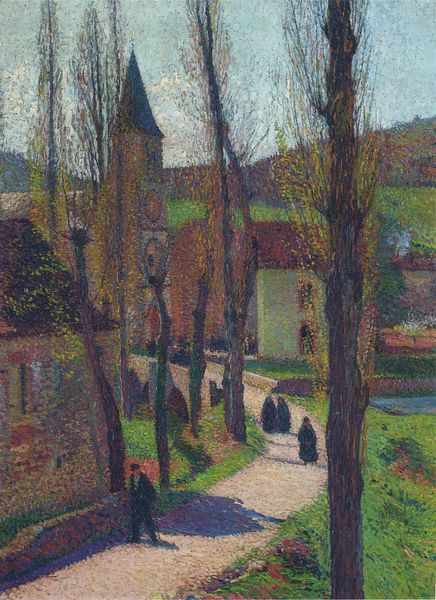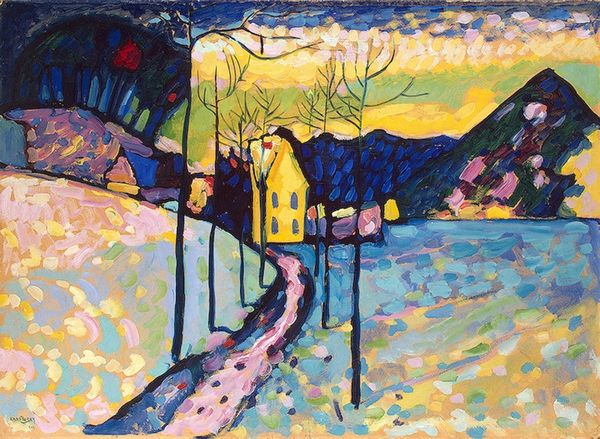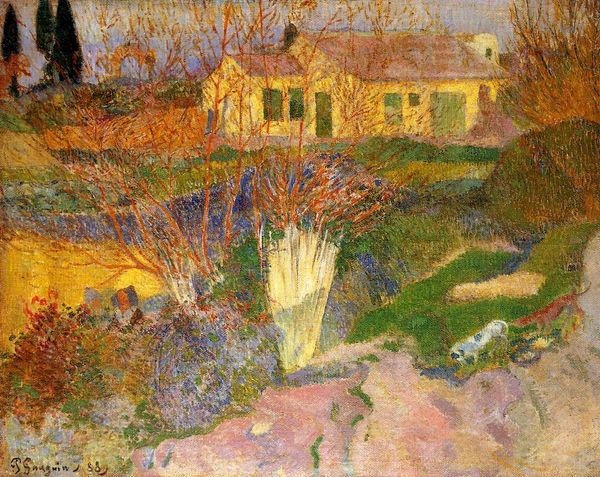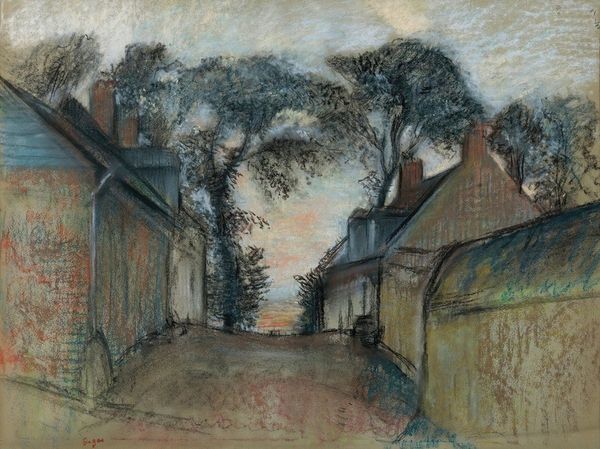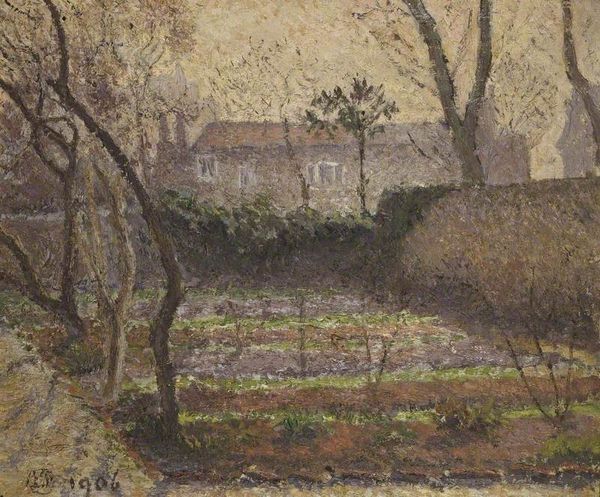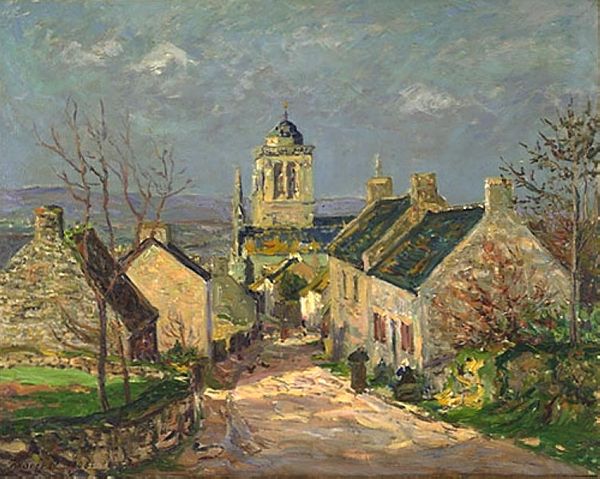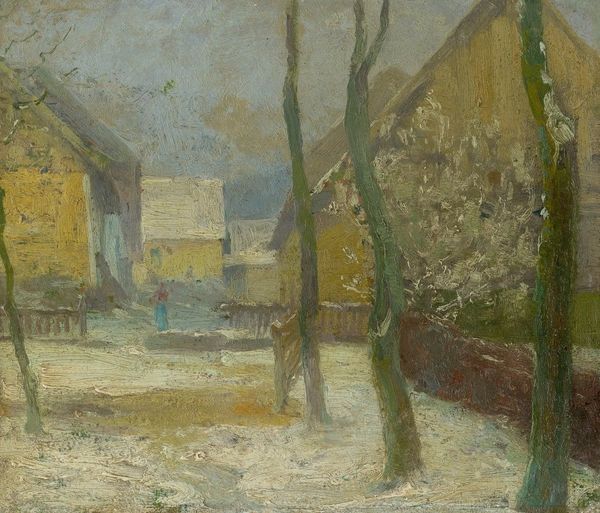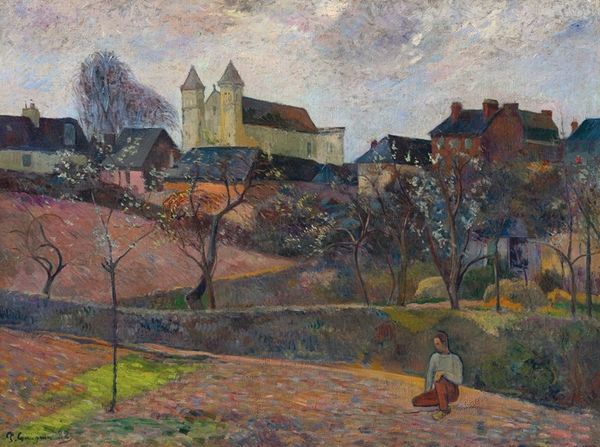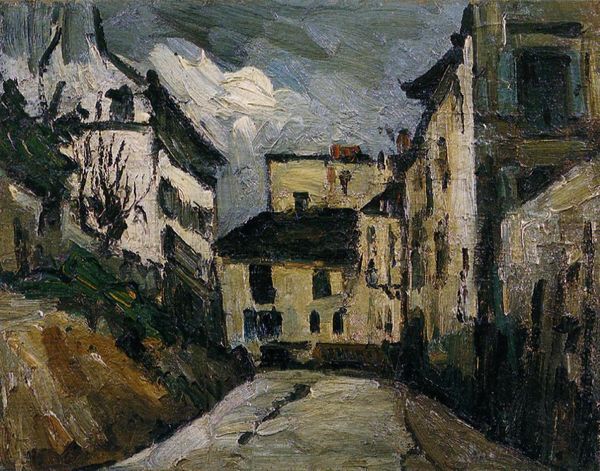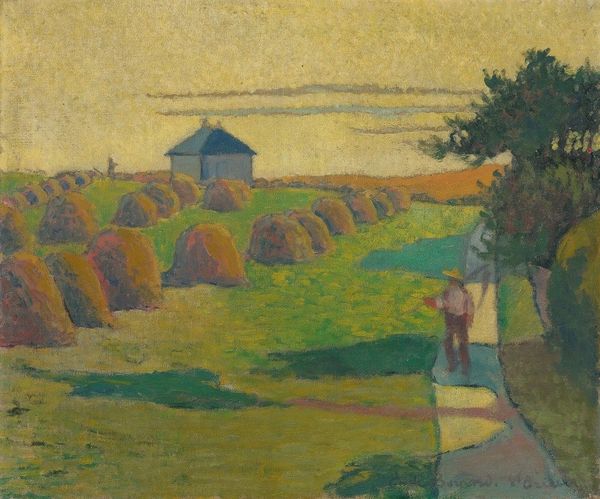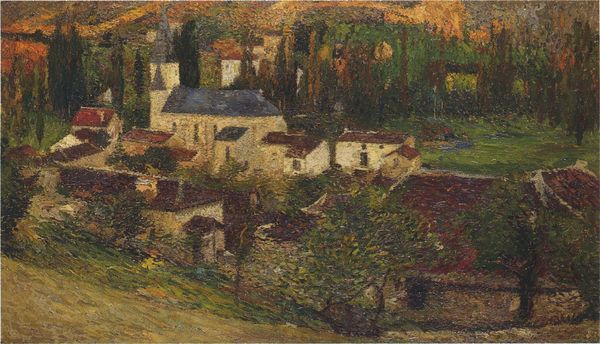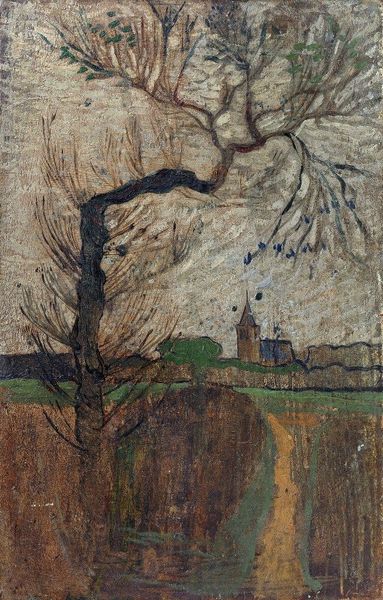
painting, oil-paint, impasto
#
narrative-art
#
painting
#
oil-paint
#
landscape
#
impasto
#
intimism
#
symbolism
#
cityscape
Copyright: Public Domain: Artvee
Curator: Let's consider Maurice Denis's, *Drying the Linen, or Moonrise at the Priory,* made with oil paint on canvas in 1894. Editor: The painting gives off this quiet, almost eerie, domesticity. All those linens hanging under the moon… It's quite intriguing. How do you see it? Curator: What strikes me is Denis's interest in depicting labor. Notice the deliberate impasto—how the thick application of oil paint makes the materiality of the artwork almost… tactile. It brings a tangible weight to what could be a simple scene. What do you make of the subject of drying linen, such everyday work, in this ‘high art’ form? Editor: Well, it kind of challenges the divide, doesn't it? It's not a grand historical painting; it's laundry. But its elevated into this ethereal scene by the moon and, of course, the painting. I wonder about the artist's decision to portray this particular process... Curator: Exactly. It makes you consider the social context— the labor, the materials, the resources available to the working classes. Did Denis intend for us to contemplate such concepts in his dreamy moonlit rendering? I suspect that he very consciously brings into question conventional ways of representing what's valuable, shifting focus from typical, heroic or divine subjects, and more on the beauty inherent in domestic work. Editor: So by elevating everyday life in his material and style, Denis questions artistic norms? It reconsiders conventional notions of artistic labor and cultural value. Thank you! Curator: Exactly. By showing labor and shifting from traditional styles, we are pushed to explore new ways of portraying artistic value. Thanks!
Comments
No comments
Be the first to comment and join the conversation on the ultimate creative platform.
